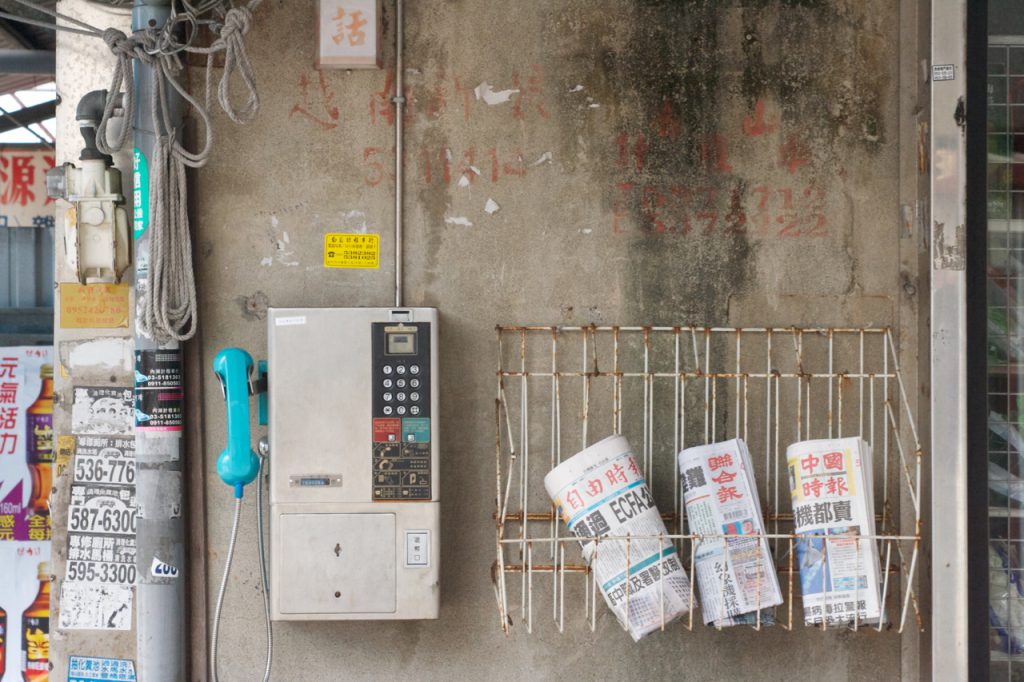
I usually stop here for a snack before boarding the airport express train. There is decent snacks and ice cream in the adjacent shopping area.
I spent most of the day yesterday recovering from Tuesday trip to Hong Kong – it was a day of coffee and books. I hadn’t slept much the night before my trip and spent all my time in Hong Kong tramping the streets.
After 19 years of living in Taiwan it’s hard to believe that I still have to do visa runs. Since my Alien Resident Certificate (ARC) expired while I was in China this year I haven’t had the time or now the necessity to go through the process, especially since I have been told that the Hong Kong TECO doesn’t do fast tracking of VISA applications anymore. As long as I don’t make a trip to the hospital I should be fine with my current status as interloper.
Of course this is all my own doing. Many long term foreign residents here apply for what is called an APRC, which if you qualify, allows for open work rights. Many are excited about the reduction in friction when its comes to changing jobs, and the elimination of yearly or bi-yearly ARC applications, but I never really saw much in the way of other advantages. Since my wife has only had 2 different jobs over the past 19 years, she didn’t see much benefit to going through what was once a lengthy time consuming process either. Even with an APRC you still face at the very least hassles in acquiring basic services here, like phone, credit cards, and etc.
My time in Hong Kong was spent walking from one side of the island to the other – visiting a couple coffee shops and a number of running pro shops along the way. Hong Kong, like Taipei, has all these interesting narrow alleys where you can discover all kind of interesting slices of city life. There is an advantage to the density of a place like this – you can fit in so much visual information and experience with little physical effort. Try to gain the same experience in Canada and you would be exhausted from the distance traversed.
I have been to Hong Kong many many times. I used to ensure that I visited western food establishments, as Hsinchu of the past didn’t have much in the way of quality food from abroad. That isn’t the case now, and though Hsinchu can’t compete with Hong Kong on selection, its good enough for my tastes. Especially coffee, as Hsinchu has some of the best roasters I have seen anywhere.
One of the many changes I have noticed with Hong Kong can be found in the city’s drug stores, which admittedly is very important. Coming from Canada where the toothpaste aisle overwhelms you with a 100 different types of toothpaste, Taiwans drugstore selection always seemed very limited (lack of choice does reduce anxiety). Things like deodorant, toothpaste, and other products that help keep a man clean and smell free are still lacking in selection. Hong Kong used to be a place I might stock up on these items, but all the shops I visited are now “China-fied” with an over abundance of Chinese medicine, heat rubs and cheap vitamins. I guess the Chinese tourist dollar has spoken.
I always make the same mistake when visiting a place. I try to cover too much ground within a short space of time. I try to experience as much as I can in the little bit of time I have. The result is usually exhaustion. I think for my next trip I’ll simply pick a location to sit, drink coffee, watch the locals and maybe be little bored. That I think might be a great luxury.

Lunch time lineups

Hidden coffee shop















